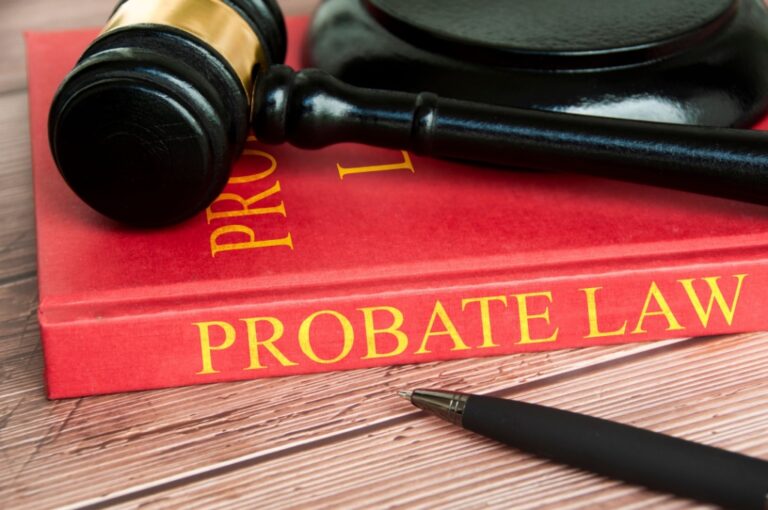As diligent savers, many parents dream of leaving a financial legacy to their children. If you’ve been judiciously stowing away funds in tax-advantaged retirement accounts like IRAs, it’s crucial to understand how recent legislative changes could impact your estate planning. The passage of the SECURE Act 1.0 and the recent SECURE 2.0 Act necessitate a strategic approach to IRA inheritance, particularly when it comes to leaving these assets to your children through a trust.
The Impact of SECURE 2.0 Act on IRA Inheritance
Previously, beneficiaries of IRAs could “stretch” required minimum distributions (RMDs) over their life expectancy, taking advantage of prolonged tax-deferred growth. Now, under SECURE 2.0, most non-spouse beneficiaries, including children, must fully withdraw inherited IRA funds within a 10-year period, prompting potentially significant tax implications and disrupting legacy planning.
Leaving IRA Assets to a Trust: A Wise Move?
Why choose a trust over an outright beneficiary designation? Trusts afford you greater control over the disposition of your assets, ensuring that beneficiaries—perhaps due to youth, inexperience, or past financial missteps—do not deplete their inheritance prematurely or neglect to plan for the associated tax burden. Trusts can also provide asset protection from creditors and facilitate centralized asset management.
See-Through Trusts: Navigating the Regulations
For a trust to mimic the benefits of individual beneficiaries, it must qualify as a “see-through” trust, satisfying four key criteria, including being valid under state law, irrevocable upon death, with identifiable beneficiaries, and with trust documents provided to the custodian in a timely manner. These requirements permit the trust to utilize the 10-year distribution window.
How can a trust qualify as a see through trust?
- Valid Under State Law: The trust must be a legal entity according to state law.
- Irrevocability: The trust must be irrevocable, or become irrevocable, upon the death of the IRA owner.
- Identifiable Beneficiaries: The trust beneficiaries must be identifiable, and they must be individuals who qualify as designated beneficiaries under the IRS rules.
- Documentation: The trust documentation must be provided to the IRA custodian by October 31 of the year following the year of the IRA owner’s death.
Conduit vs. Accumulation Trusts: The Strategic Dilemma
Conduit trusts require all RMDs to be distributed to beneficiaries, who then bear the tax burden. Pre-SECURE Act, this could be stretched over a lifetime, but now, the 10-year rule condenses this timeline, potentially amplifying the tax impact.
Accumulation trusts offer an alternative, granting trustees discretion to retain distributions within the trust. While this option protects assets from creditors and prevents large, immediate payouts to beneficiaries, it could also subject the trust to higher income tax rates given the condensed tax brackets for trusts.
The Pros and Cons
Conduit Trust:
Pros:
- Simple Distribution: The RMDs (Required Minimum Distributions) are passed directly to the trust beneficiaries, simplifying the distribution process.
- Tax Benefits: Because the distributions are passed through to the beneficiaries, the income is taxed at the beneficiaries’ personal income tax rates, which are often lower than the trust’s tax rates.
- Compliance with RMD Rules: Conduit trusts can easily comply with RMD rules because the distributions flow directly to the beneficiaries each year.
Cons:
- Lack of Asset Protection: Since the distributions are passed through to the beneficiaries, the assets may be more vulnerable to the beneficiaries’ creditors, divorce proceedings, or poor spending habits.
- Mandatory Distributions: The trust is required to distribute all RMDs received, which can be a disadvantage if the goal is to preserve assets within the trust.
- No Flexibility in Distributions: The trustee does not have the discretion to hold distributions inside the trust for future use or for protection.
Accumulation Trust:
Pros:
- Asset Protection: The trustee can retain distributions within the trust, providing protection from beneficiaries’ creditors, lawsuits, or irresponsible spending.
- Flexibility: Trustees can accumulate distributions within the trust and have discretion over when to distribute these funds to beneficiaries.
- Growth Potential: Accumulated funds can be invested within the trust, potentially allowing for further growth of the assets.
Cons:
- Higher Tax Rates: Trusts are subject to higher tax rates at lower income thresholds compared to individuals. Accumulated income that is not distributed may therefore be taxed at a higher rate.
- Complexity: Accumulation trusts can be more complex to administer due to the need for careful accounting of what income remains inside the trust.
- Potential for Trust Taxation: If the funds are not distributed, the income is taxed at the trust level, which could result in more taxes owed due to the compressed tax brackets for trusts.
- Possible Loss of Stretch IRA: Under the SECURE Act, most non-spouse beneficiaries of IRAs are required to withdraw all funds from an inherited IRA within 10 years. This can limit the benefit of an accumulation trust for IRA distributions because the potential for “stretching” the distributions over a beneficiary’s lifetime is no longer applicable in many cases.
The choice between an accumulation trust and a conduit trust depends on the trust creator’s goals, the beneficiaries’ circumstances, and the size of the IRA.
Ultimately should you leave your IRA to a trust?
Pros:
- Control and Protection: Trusts can restrict beneficiaries from irresponsible spending and offer protection against creditors.
- Discretionary Distributions: Particularly with accumulation trusts, trustees can tailor distributions to the beneficiaries’ needs and circumstances.
Cons:
- Tax Consequences: The compressed nature of trust tax brackets can lead to higher taxes on distributions retained within the trust.
- Complexity: Navigating the see-through trust rules requires meticulous planning and legal expertise to avoid pitfalls.
Why L. Jennings Law Is Essential for Your Estate Planning
Estate planning, especially with the nuances introduced by the SECURE 2.0 Act, is not a DIY endeavor. At L. Jennings Law, we offer a blend of legal prowess and tax planning expertise to navigate these complexities. We’ll work closely with you to:
- Craft an estate plan that aligns with your desires for your beneficiaries’ inheritances.
- Optimize your trust structure to ensure it meets the stringent “see-through” criteria.
- Balance control and protection with the tax-efficient transfer of your IRA to your heirs.
Understanding the SECURE 2.0 Act and its implications is not only about compliance—it’s about honoring your life’s work and the legacy you wish to leave. Don’t leave your children’s financial future to chance. Contact L. Jennings Law to ensure that your IRA inheritance strategy maximizes the benefits for your loved ones while mitigating the tax impact. Let our expertise guide you through the intricacies of trust planning under the new legislative landscape.







